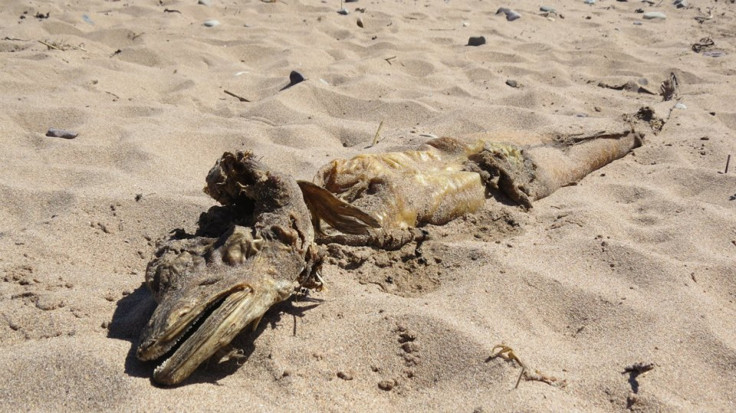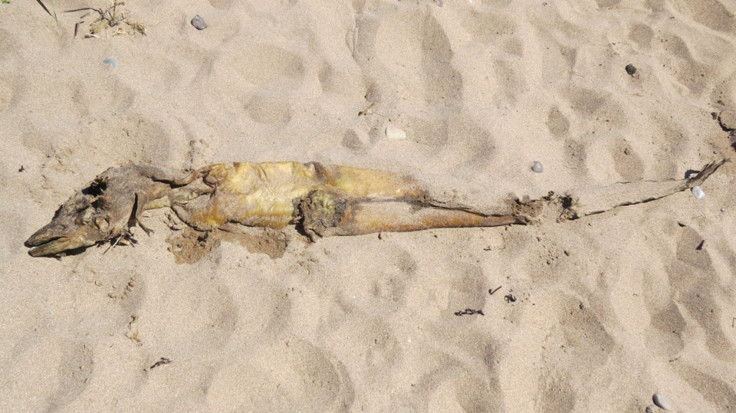Was The Loch Ness Monster Found In Scotland? Mysterious Sea Creature Washed Ashore On East Haven Beach [PHOTOS]



Something fishy washed ashore last week in Scotland. Locals of a beachside town found what appears to be a skeleton some speculate is the Loch Ness Monster, an ancient sea creature that is believed to dwell in Loch Ness lake.
David Mackland, a local of East Haven beach, spotted the creature while hanging out with his family. He says the body is roughly 4-5 feet long.
“I don’t know what it is. To be honest it looks a bit like an eel as it has no fins on the back,” Mackland told Britain's Evening Telegraph. “You don’t usually see stuff like that. You very rarely see fish on the beach. You sometimes see dead birds but it is unusual to see that.”
Stephen McKelvie, supervisor of the St. Andrews Aquarium, says the animal is most likely an oarfish or conger eel. “The shape of the jaw and the pattern of the teeth are the only things to go on, because of the level of mortification,” he said.
Conger eels are commonly found off the British coast. They can grow up to 6 feet in length, have large heads, gill slits and wide mouths. In 2009, a British fisherman caught a 10-foot conger eel that weighed a hefty 100 pounds. The fish is a popular dish in the UK, where the meat is sold in grocery stores. The current world record for the largest eel caught is held in Ireland for a conger eel that weighed 305 pounds.
Oarfish are rarer. Easily mistaken for a sea serpent, it's the longest bony fish in the sea that can grow up to 50 feet in length. They're typically found in tropical and temperate waters and surface when they're injured or dying.
© Copyright IBTimes 2025. All rights reserved.




















